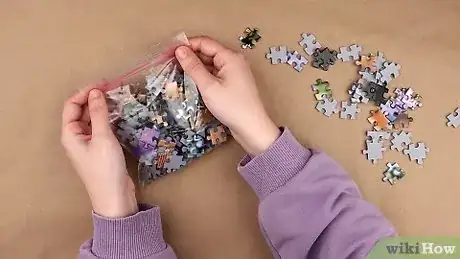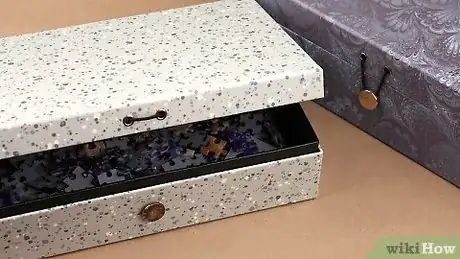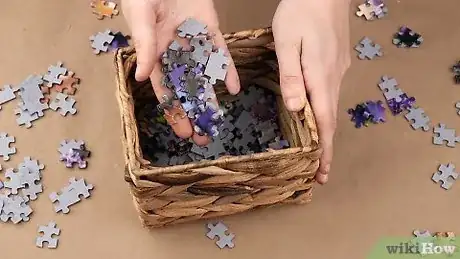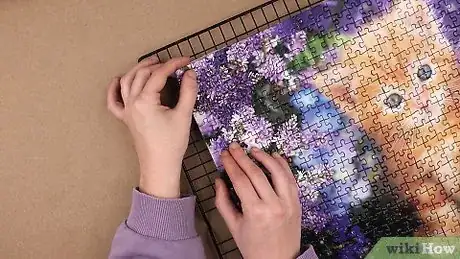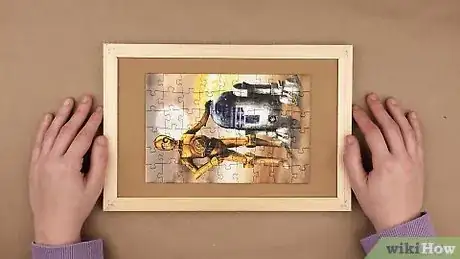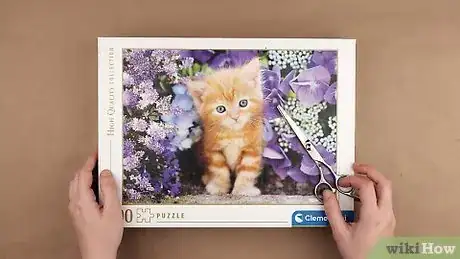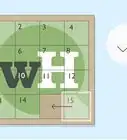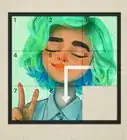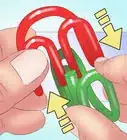This article was co-authored by Robert Rybarski and by wikiHow staff writer, Hunter Rising. Robert Rybarski is an Organizational Specialist and Co-Owner of Conquering Clutter, a business that customizes closets, garages, and plantation shutters to ensure organized homes and lifestyles. Robert has over 23 years of consulting and sales experience in the organization industry. His business is based in Southern California.
There are 9 references cited in this article, which can be found at the bottom of the page.
This article has been viewed 4,841 times.
If you love putting together puzzles and want to save some space, ditching the boxes they came in can reduce so much clutter. Whether you’re organizing puzzles that kids do over and over again or want a better system for larger jigsaw puzzles, there are tons of storage solutions you can try. Keep reading to find the perfect way to keep your puzzles tucked away and organized!
Steps
Use plastic storage bags.
-
Your puzzle pieces will stay organized and take up less space. Use a sandwich bag for small kids’ puzzles and gallon-sized bags for larger jigsaw puzzles. Put all of the pieces in the bag and squeeze out as much air as you can to make the bags more compact. Then, just keep all of your puzzle pieces together in a basket or on a shelf.[1] X Research source
- Avoid storing the bags in direct sunlight since the bags could create humidity that damages the pieces.
Try resealable mesh bags.
-
Mesh bags keep your puzzle pieces safe from humidity. Humid weather can distort the puzzle pieces, but mesh bags are breathable and prevent any damage. Make sure that the puzzle pieces are large enough so they don’t slip through the mesh. Dump all of the pieces of a puzzle into the bag and zip it up.[2] X Research source
- You can buy mesh storage bags online or from any big box store.
Keep puzzles in plastic storage bins.
-
Bins are more compact and prevent the pieces from getting damaged. Choose the smallest bin that you can for each puzzle so you don’t take up any extra space. Snap the lid onto the bin to ensure that you don’t lose any of the pieces. Set a picture of the finished puzzle on top of the pieces so you know what it’s supposed to look like at a glance.
- You can usually get bins that interlock and stack so you can keep them even more organized.
- You can keep multiple puzzles in the same bin if you have them separated into different storage bags.
Put small puzzles in pencil cases.
-
You can easily tuck pencil cases into more compact spaces. You can use either hard plastic cases or zip-up pouches to hold the pieces. Once you put all of the pieces in the case, seal it shut so you don’t lose any. Keep all of the cases in one spot on a shelf or in a closet so you can access all of your puzzles easily.
- If the pencil cases have metal grommets, secure them in a 3-ring binder. That way, you store all of your puzzles in one place and can easily look through them.
Store the pieces in photo boxes.
-
A photo box takes up a fraction of the space that a cardboard box does. Photo boxes are usually meant to hold prints, but they’re the perfect size for your smaller puzzles. Keep your photo boxes on a shelf, desk drawer, or closet so they’re out of sight.[3] X Research source
- You can buy photo boxes from your local big-box store or online.
Place puzzles in clear envelope folders.
-
Envelope folders are the perfect size to hold kids’ puzzles. Envelope folders have a flap that folds over and seals shut so the pieces don’t spill out. Just slide the puzzle into the folder and close it tightly. Keep the folders in a basket or in the closet near a playroom or in the bedroom so all your puzzles are in one spot.[4] X Research source
- Opaque folders make it hard to see what puzzle is inside, so choose ones that are transparent instead.
Organize puzzles in stackable baskets.
-
A stack of baskets with puzzles inside has a nice uniform appearance. You can either keep bags or bins with puzzle pieces in the baskets or fill them with wooden kids’ puzzles. Once one basket is filled to the top, set another basket on top and start filling it to save some space.[5] X Research source
- You can get stacking baskets or containers online or from your local big box store.
Slide puzzles onto a wire rack.
-
Wooden puzzles slot right into a wire rack. Just slide any kids’ puzzles into the slots. Keep the wire rack on top of another shelf or on the floor. Now instead of stacking the puzzles on top of one another in a cluttered stack, you’ll be able to slide out the one you want easily.[6] X Research source
- You can buy a wire puzzle rack online. Otherwise, a wire document rack from an office supply store may work in a pinch.
Set the pieces on a puzzle tray.
-
Trays let you leave a puzzle half-finished without taking up table space. Even a large, sturdy piece of foam board will work if you don’t want to buy or build a puzzle tray. Set the tray down wherever you want to work on your puzzle, and start building it on the tray. When you want to stop and take a break, you can just slide the tray under a bed or couch so it’s out of the way.[7] X Research source
Store the pieces in a puzzle mat.
-
Roll your puzzle up while you’re working on it so it’s out of the way. Unroll the mat and start building your puzzle on it. When you’re finished working on your puzzle and want to clean up, keep all the pieces on the mat. Then, just roll up the mat to keep your puzzle safe.[8] X Research source
- You can get puzzle mats in a ton of different sizes, so you’re bound to find one large enough for your puzzle.
Save a pic of the completed puzzle.
-
Cut the cover off the box so you know what the finished puzzle looks like. Once you take the puzzle out of the box, it’s tough to tell what the final image is supposed to be just by looking at the pieces. Use a pair of scissors or a craft knife to cut the picture off of the cover so you can store it with the rest of the pieces.
- If you don’t want to cut the box cover, take a picture of the box and print it out.
- Some puzzles come with a small sheet of paper with a picture of the completed puzzle.
You Might Also Like
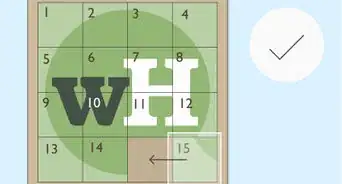 How to Solve Slider Puzzles of Any Size
How to Solve Slider Puzzles of Any Size
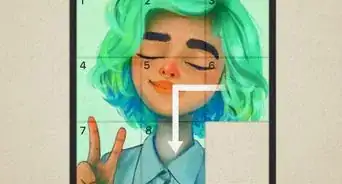
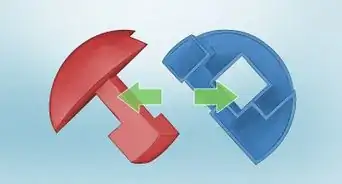
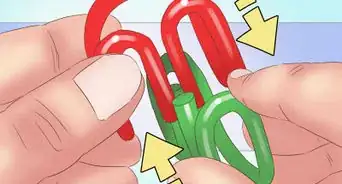
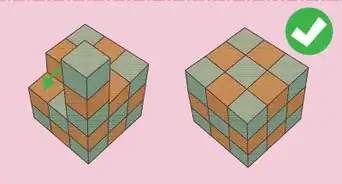
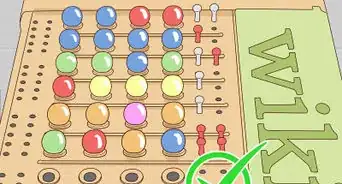
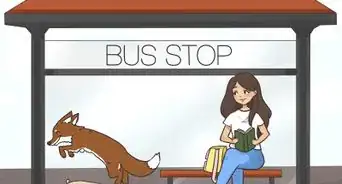


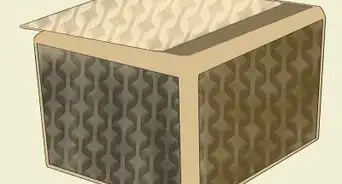
References
- ↑ https://onecreativemommy.com/organize-and-save-space-with-easy-puzzle-storage/
- ↑ https://fullcirclewithjess.com/game-organization/
- ↑ https://fullcirclewithjess.com/game-organization/
- ↑ https://talesofateachermom.com/tips-for-organizing-toys/
- ↑ https://www.pre-kpages.com/cheap-puzzle-storage-solution/
- ↑ https://designimprovised.com/2014/03/toy-storage-ideas-part-2.html
- ↑ https://youtu.be/Nb8SQMJQORg?t=167
- ↑ https://youtu.be/vOEnEn5vqyA?t=117
- ↑ https://youtu.be/JYetiyoVswU?t=102
About This Article

